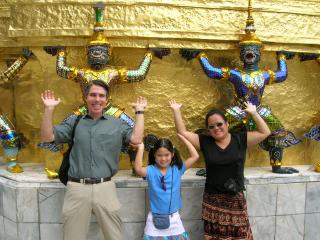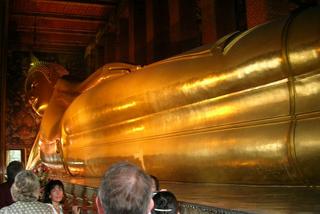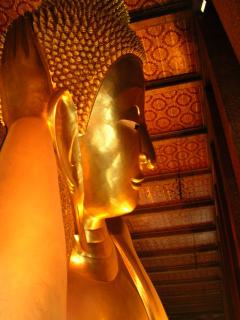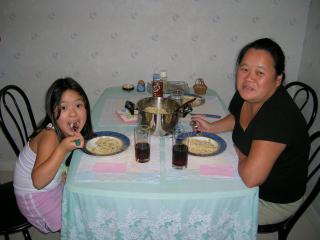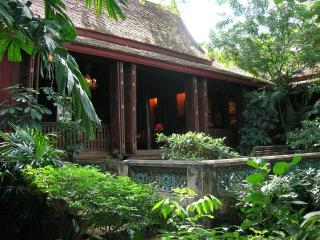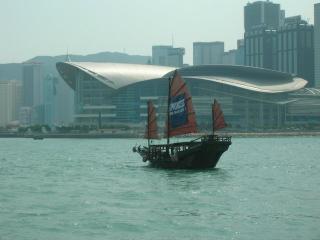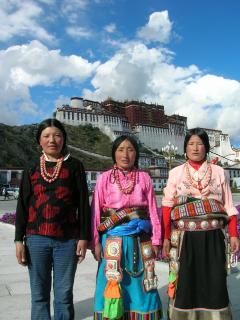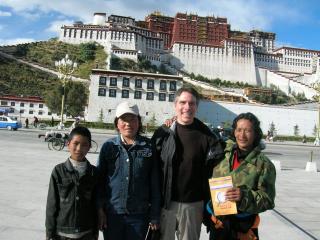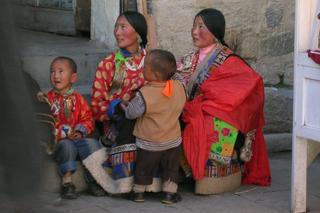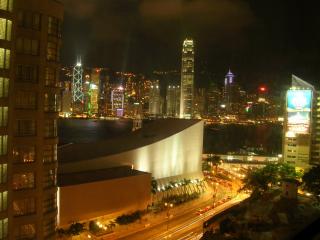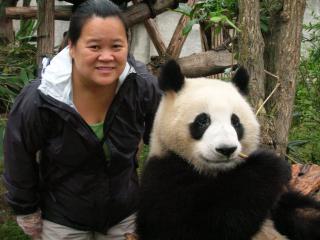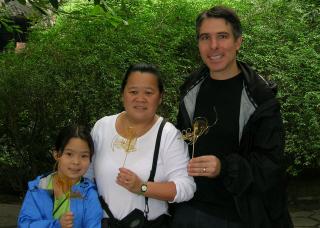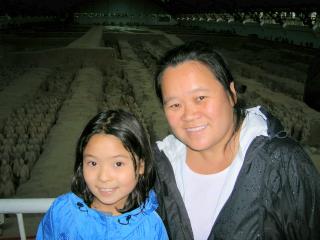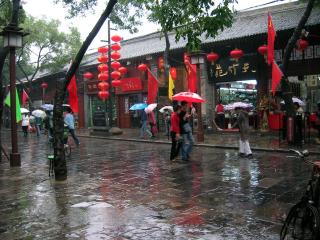After four very interesting days in Lhasa Tibet, we're now in Guangzhou (formerly Canton) China, just a short hop away from Hong Kong, where we will be headed in a couple of days. For political reasons we'll be posting a blog entry about our experiences in Tibet after we leave mainland China. In the meantime, we thought we'd share some of our thoughts about the mainland after being in the country for the past month. We've also been making some plans for the next leg of our journey and would love any advice you have (see the end of this post).
China has been interesting, compelling, fascinating and unlike any country we have ever visited. We had wanted to visit China not only to see the ancient sites, but to catch a glimpse of what the buzz is about in the world's most populated nation and where it will be taking us in the next century. We have barely scratched the surface of China, but while it has been an education, we can't really say that much of it has been fun (except the time with our friends), and we have faced many challenges. China has brought me (Loey) to tears more times than I would like to admit. From the grinding poverty of the beggars in Tibet, to the obstinate contrary attitudes of many of the people we've had to interact with, to the insane and dangerous behavior of many of the drivers, China is a country where there never seems to be a clear picture of what you are getting. It seems that you are in a fun house, where the mirrors warp the reality of what you think you know and what you don't. Although this can be exciting, it can also be exhausting and we have really felt emotionally ground down by China.

Of course, we didn't think that it would be an "easy" country, but we were surprised by what we found difficult to cope with. Worries about SARS, disease, and getting lost were quickly overtaken by the more concrete risks of dealing with traffic, getting into arguments with taxi drivers over fares, the crushing crowds, and the pollution, both in the air and on the ground (the Chinese are big spitters). It has been a huge challenge being non-Chinese speakers here. While it is presumptuous to believe that the rest of the world speaks English, or at least should have some knowledge of the language, we found that the number of speakers comfortable with English was far fewer than we had expected. Imagine a Mandarin speaker traveling through Portland without a Chinese-speaking tour guide, knowing only the words "hello," "thank you," the numbers 1-10 and "yes" and "no," and you can see how frustrating it would be for both parties, the American and the Chinese, to have a smooth transaction.
That said, we do not regret coming here. From the grandeur of the Great Wall and the Forbidden City, to the cuddly Pandas, to the culturally rich Tibet, to the street vendors selling amazing souvenirs, we have gathered memories and images that will stay with us forever.

There is a part of us which still wants to be twenty-year-old backpackers, traveling for six weeks on the silk road, living in yurts and eating yak meat every day, sharing stories of exotic destinations like battle scars after a rugby match. But it has really hit home for us how much traveling with a child slows you down, and even a trip to Canada might be enough adventure. It seems that the English-speaking families we know of who have traveled around the world for a year have stayed for a considerable time in Europe, Australia, New Zealand and Canada--with familiar languages and cultures--for much of their year abroad, and we now understand why! Our original plans were to stay in Asia for seven months, going to Thailand on November 1st. But after the past two months, and especially after traveling through China, we have had to readjust our expectations of what we can deal with and what would be fun for us. Our conclusion is that if we don't want to go home tomorrow, we really need to take a break from the constant travel and from Asia!
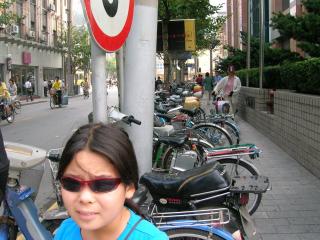
That said, our priority is to go to an English-speaking country: we've been in non-English-speaking countries since August 16th, and it's amazing how sweet it is to hear your native tongue. We have reached the part of our journey where there is nothing more desirable than staying somewhere for a few weeks, cooking a meal and having a bed to call our own. We hope to slow down, and to actually have a consistent routine, not only for the adults, but also for Dylan, who really thrives on knowing what's going to happen next.

Our tentative plan is to spend about a week in Hong Kong and then fly to London and stay there for a month or more, then take a few weeks to travel to Ireland and France, then head to Bangkok in mid-January. We feel that the culture in England is familiar enough that we can deal with the basics (lodging, food, transport) easily, yet different and rich enough that we will learn from and enjoy an extended immersion in the country. So we're currently researching airfares and rentals of furnished flats.
If anyone reading this has suggestions about the following, we'd really love to hear from you in the next couple of days:
* desirable neighborhoods to stay in London or the surrounding area
* people or agents or web sites which might have suitable lodging for us
* anyone in London who might need a house-sitter for a few weeks sometime between October and January (hey, it worked great for us in Portland this summer!)
* places other than London that we should consider (we've already thought of Dublin, Oxford, Sydney and Auckland, though haven't done much research into any of them)
Our priorities for places to stay include:
* Reasonable airfare from Hong Kong
* Reasonable cost of living (London's major failing)
* English spoken by a large portion of the populace
* Fairly good weather in October-January (London's other minus)
* A culture we can immerse ourselves in and learn from
Our desires for an apartment include:
* Two bedrooms
* Furnished with the basics
* No cat/dog/bird dander or smoking residue
* Clean and well-maintained
* Relatively quiet location
* Accessible to public transit and grocery shopping
* Not too far from cultural and tourist destinations
* Affordable
Thanks in advance for any suggestions you might have!


 and lasted for about 45 minutes in the weekend market because of the tropical heat. Mostly we’ve watched hours of our lives pass away in mind-numbingly long traffic jams which could put even the patience of a Thai Buddhist to the test. Bangkok has traffic worse than anything Los Angeles can throw out; perhaps like its counterpart, this city of angels has spread its wings way too far, forcing all who navigate it to drive everywhere. We’ve also sat around the apartment and watched movies, including the really awful Herbie Fully Loaded, and spent hours making further travel plans, for Thailand as well as the next couple of months. This week we are renting a car and P’Tu, a friend of the owners of the condo, is driving us to the floating market at Damnoen Saduak.
and lasted for about 45 minutes in the weekend market because of the tropical heat. Mostly we’ve watched hours of our lives pass away in mind-numbingly long traffic jams which could put even the patience of a Thai Buddhist to the test. Bangkok has traffic worse than anything Los Angeles can throw out; perhaps like its counterpart, this city of angels has spread its wings way too far, forcing all who navigate it to drive everywhere. We’ve also sat around the apartment and watched movies, including the really awful Herbie Fully Loaded, and spent hours making further travel plans, for Thailand as well as the next couple of months. This week we are renting a car and P’Tu, a friend of the owners of the condo, is driving us to the floating market at Damnoen Saduak.



